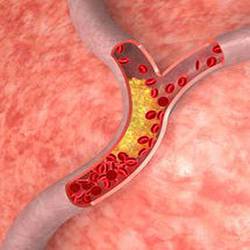Vitamin C Supplementation
| Cellular NutritionOptimal Health Benefits versus Overdose

Even many of those who generally do not take nutritional supplements on a regular basis will still reach for the odd Vitamin C tablet when feeling a cold coming on, compliments of Linus Pauling's [1] best-selling book "Vitamin C and the Common Cold," which rocketed the immune-enhancing effects of Vitamin C to fame, and thanks to the many studies, books, and articles that since followed. While the latest recommended daily or dietary allowance (RDA) stands now at 75-90 mg per day for adults (see bottom of page), a higher dietary reference intake (DRI) is again in review. However, many of those who regularly supplement Vitamin C, take in the vicinity of 250 mg to 1,000 mg / day, and there are those who take up to, and beyond 10,000 mg daily.
Headlines about oxidative damage (DNA mutations) attributed to taking dosages of Vitamin C in excess of 500 mg per day had many people step back and reconsider their supplemental routines. In addition, similar studies had come to light just prior to the Vitamin C revelation that regularly supplementing Beta Carotene had the potential of causing lung cancer. This however, as it turned out later, only applied to smokers who had used higher doses of synthetic, but not natural sources of beta carotene, which made the use of natural source mixed carotenoids the better choice.
Once the headlines on the possible DNA-damaging potential from taking higher doses of Vitamin C faded, most people continued where they left off and resumed their previous regimen again, especially following publications to the contrary which indicated that the original studies on Vitamin C were flawed (ascorbic acid without naturally occurring cofactors - such as rutin and hesperidin - were used), and that epidemiological data showed no evidence at all that higher dosages of ascorbic acid caused cancer.
What causes Vitamin C deficiencies?
While a Vitamin C deficiency may develop following a long-term insufficient dietary or supplemental intake of ascorbic acid, deficiencies may also result from excessive levels of Vitamin C antagonists, or other factors (listed below) that cause a Vitamin C deficiency or reduce its benefits.
Even when regularly consuming Vitamin C-rich foods, people exhibiting very high Copper levels rarely reach optimum levels of Vitamin C (i.e. optimal benefits), unless they supplement in excess of 1,000 mg / day, or unless they lower copper first through other means. Dr. Ronald Roth not only saw patients supplementing Vitamin C in the 5,000 mg - 10,000 mg range and just barely meet normal requirements, but they start to redevelop medical symptoms (from high copper and a resulting pseudo-deficiency of Vitamin C), as soon as they reduce that amount. So if there is a tendency to retain too much copper, and a daily multi-vitamin / mineral tablet is supplemented, a brand should be chosen that does not contain any copper.
Is it possible to overdose on Vitamin C?
Questions on what daily intake of ascorbic acid is considered to be an "overdose" come up on a regular basis. While less informed sources dismiss the possibility of a Vitamin C overdose or toxicity based on ascorbic acid being water-soluble, they seem to forget that even water-soluble nutrients interact with other nutritional elements as synergists or antagonists, and as such are capable of enhancing or inhibiting their benefits and functions.
Since these interactions are relative to the levels of all the other nutrients Vitamin C interacts with, and since these levels vary from one patient to the next, it is not possible to establish a universal Vitamin C overdose amount, or specific Vitamin C side effects that apply to everyone. At the same time, while the potential to clinically overdose on Vitamin C does exist, it is quite rare and not expected to occur at the 250 to 1,000 mg adult intake level considered average for those that regularly self-supplement.
However, as demonstrated with several examples below, the effect of a regular, daily overdose of Vitamin C is not an acute event as experienced with a deadly, toxic substance, but a gradual change in mineral ratios and the progressive lowering of other essential elements, which over time can result in the development of moderate to serious medical problems. An acute medical event can still arise though following a substantial Vitamin C overdose, where too much ascorbic acid lowers an already deficient nutrient even more, resulting in acute deficiency symptoms of that nutrient, or where an excessive intake of Vitamin C triggers acute gastrointestinal symptoms. (see bottom of this page for Vitamin C overdose signs and symptoms).
The effect of high doses of Vitamin C on Copper, Zinc, Manganese, and Calcium:
There are individuals whose copper levels are on the low side. Being unaware of the antagonistic effect of Vitamin C on copper, they may feel a cold coming on and start to take a few thousand mgs of Vitamin C, causing copper levels to drop to a point of becoming deficient, and provoking an inflammatory response.
Acute conjunctivitis (Pink eye), or blepharitis (inflamed eyelids) triggered by copper deficiency following a short course of very high ascorbic acid intake, is a classic example of how taking too much Vitamin C can actually cause, or worsen an infection. Chronic conjunctivitis (or blepharitis) can occur when higher copper stores are gradually depleted following the practice of regularly overdosing on Vitamin C. It can also develop secondary to overdosing on other copper antagonists, such as Sulfur (MSM, glucosamine sulfate), or Zinc.
Nutritional excesses and deficiencies - including Vitamin C overdose - can be one of the less-obvious to establish non-viral, bacterial, or allergenic causes for inflammatory eye disorders or other medical issues, although higher doses of Vit C & A may be required in the nutritional treatment of infectious conjunctivitis.
In another chronic copper deficiency / Vitamin C overdose example, a young boy was brought into Dr. Ronald Roth's office to investigate the reason why his leg bones were soft and becoming increasingly malformed. It turned out that his father was giving him 2,000 mg of Vitamin C per day from an early age, which resulted in a severe, long-term copper deficiency. Reducing his ascorbic acid intake to more reasonable levels corrected the condition. 100 mg - 250 mg of Vitamin C is sufficient for most young children to meet basic requirements.
Vitamin C lowers Zinc directly, and it lowers it indirectly by supporting Iron absorption, so while a higher intake of ascorbic acid would likely benefit those suffering from some forms of anemia, leukemia, left-sided ovarian cysts, or from prostatitis, the same higher Vitamin C intake would worsen certain liver conditions (hemochromatosis), benign prostatic hypertrophy, or more serious kidney diseases (renal failure).
Larger amounts of Vitamin C lower Manganese levels and aid greater insulin production in those capable of producing insulin, which may be beneficial for Type II diabetics, but it would worsen those with hypoglycemic tendencies that exhibit low sodium, since sodium slows insulin response, so a very high intake of Vitamin C would create larger insulin spikes. By lowering manganese, very high doses of Vitamin C also affect (lower) glycogen stores in the liver.
Manganese has some control over the liver's ability to break down estrogen, so too much Vitamin C can affect the length of the menstrual cycle and worsen low estrogenic-types of PMS. On the other hand, congestive liver disease, resulting in higher estrogen levels, will benefit from higher doses of Vitamin C by reducing the symptoms of high estrogenic-types of PMS, while at the same time reducing the risk to develop estrogen sensitive (estrogen receptor-positive) types of cancer or fibroid tumors that may develop as a result of a lifelong higher mean average level of estrogen.
Calcium metabolism is much affected by Vitamin C intake. Patients who suffer from calcium overload benefit from supplementing larger daily amounts of Vitamin C because they prevent calcium from calcifying soft tissue. Low stomach acid levels are also a common side effect of elevated calcium, for which a higher Vitamin C intake is beneficial as well. While the right amount of ascorbic acid increases bioavailability of calcium, very high intake of Vitamin C, if not needed, will eventually put extra demands on calcium stores (bone) and result in calcium deficiency, which can lead to osteopenia, or eventually osteoporosis.
While excessive intake of Vitamin C is reflected in deficient cellular levels of calcium, serum calcium levels remain unaffected as they are not suitable to measure dietary calcium requirements, so a Vitamin C overdose is rarely suspect of being the potential cause of numerous calcium deficiency-related side effects such as leg cramps (left-sided only, unless magnesium is also low), light, restless sleep or insomnia, anxieties, increased daytime fatigue, joint pains (more so left-sided), brittle nails with vertical ridges due to low calcium ratios, or increasingly horizontal, groove-like ridges as a result of prolonged, severe deficiency.
It is not uncommon to find copper and zinc levels to be excessively high, making Vitamin C an ideal remedy to lower both, however the large dosages needed can at the same time significantly reduce calcium levels (unless they are high to begin with) to the point of seriously accelerating bone loss. To lessen side effects, one could choose buffered Vitamin C, such as calcium ascorbate or sodium ascorbate (if the kidneys can handle the extra sodium), or simply making sure that adequate calcium is supplemented at the same time.
Some of Dr. Ronald Roth's patients requiring very large doses of Vitamin C have also taken a small amount of Nickel, which has helped reduce Vitamin C requirements considerably, and with it the detrimental effects of higher dosages of ascorbic acid on the rest of the system (such as possibly lowering calcium too much).
While Vitamin C and Vitamin E exhibit synergistic properties in regard to antioxidant activity, unless the one supplemented is truly deficient, increasing its intake also increases the requirements of the other, otherwise a pseudo-deficiency of the other, and a ratio conflict, or balance problem with nickel takes place, which can change vasodilating or vasoconstrictive properties of the coronary arteries. While this poses no problems for the average, healthy individual, it can be detrimental for those suffering from angina-related conditions. (see also Acu-Cell "Nickel & Cobalt" which discusses the relationship of nickel to Vitamin C and Vitamin E).
Optimal supplementation of Vitamin C by population average

The above graph illustrates what percentage of the population will enjoy optimal benefits from supplementing extra Vitamin C - not counting dietary sources of Vitamin C. These amounts are based on average, cellular requirements of Vitamin C, which go beyond the recommended deficiency-preventive RDA/DRI minimum intake. Instead, they take into account the synergistic and antagonistic effect of all other nutrients that interact with Vitamin C as well, to encompass a much wider scope of disease prevention.
However, even optimal requirements tend to fluctuate under specific medical circumstances and may need to be adjusted to meet extra cellular demands (e.g. with injuries, high stress situations, hormonal changes, viral / bacterial infections, or dietary factors such as food binges [chocolate], resulting in copper overload).
How much Vitamin C should one supplement?
Vitamin C supplemental requirements not only vary from one person to the next, but they vary for the same person over a lifetime. Unfortunately, the optimal dosage of Vitamin C - just like the optimal dosage for many other nutrients - can usually only be established when one has the resources to measure their actual requirements.
The "Bowel Tolerance Challenge" - recommended by some doctors - to determine the optimal intake of Vitamin C by ingesting increasing amounts of ascorbic acid until diarrhea sets in, then reducing Vitamin C to a tolerated dose, only measures one's tolerance to the type of ascorbate, and the amounts used, but it does not reflect optimal Vitamin C intake to achieve optimal benefits.
If uncertain what one's actual requirements are, 500 mg of Vitamin C / day is universally considered to be safe, mostly free of side effects, and covers minimum requirements, even though that amount will not be an optimal dosage for a large portion of the population.
If a daily multi-vitamin/mineral pill is taken, it may be best to just use a basic brand with as many essential ingredients as possible, but not much higher than the RDA / DRI, despite the fact that this may also not provide optimal amounts of nutrients. The reason is simply that no brand is able to provide all essential nutrients in their optimal configuration for an individual, so mega dosages not only create the potential for side effects, but also the possibility of creating ratio-induced pseudo-deficiencies of any nutrients left out.
Randomly overdosing or megadosing on single nutrients (including Vitamin C) creates a risk of significantly imbalancing one's system, and it makes little difference whether or not water-soluble vitamins such as Vitamin C, or B-Vitamins are used. While excessive intake of fat-soluble vitamins, as well as overdosing on any number of minerals can be toxic, even water-soluble nutrients can cause side effects, or do an amazing amount of damage when regularly overdosed on during their sometimes short journey through the body.
Any time a single nutrient is supplemented at excessive amounts, one is really dealing with a much more powerful drug-like effect. And although this has a greater potential to help a medical situation, it equally has the potential of making a particular medical condition worse, or even create new ones if inappropriately used. Supplementing above-RDA / DRI amounts of Vitamin C will most certainly have a positive effect on people's general health, however the decision to megadose on Vitamin C (> 5,000 mg) - or any other nutrient - should at least be supported with some valid reasons or clinical evidence. In most cases, it is the synergistic effect of several similar nutritional compounds that yield the best results because of their more food-like attributes, and their lesser chance of provoking side effects.
Being educated about nutrition and trying to improve one's health is highly commendable, but at the same time it also helps to have a medical professional check out what all that supplementation is actually doing to one's system.
Vitamin C supplementation during Pregnancy and Nursing:
If pregnant women take higher amounts of Vitamin C, it is advisable to reduce their Vitamin C intake to between 250 - 500 mg per day shortly (one to two weeks) before delivery, otherwise the baby will become Vitamin C-deficient after birth until the body adapts to being "cut off" from a higher supply of Vitamin C while in the womb. This is not necessary if the baby is breastfed, because it will continue to receive the higher amount of Vitamin C from breast milk. However when the time comes to wean the baby, the same routine needs to be followed, where the mother will have to reduce a higher intake of Vitamin C to that lesser amount to prevent the baby from temporarily becoming Vitamin C-deficient.
Ascorbic Acid, or Vitamin C is an essential nutrient that Humans, as well as Apes and Guinea pigs must obtain from dietary food sources. Most other animals produce ascorbic acid in the liver from glucose, and in much higher amounts than we get from our diets today.
Vitamin C is found mostly in fruits and vegetables, where the highest concentrations are in fresh, raw foods, while whole grains, seeds, or beans contain very little Vitamin C, except when they are sprouted, which raises the ascorbic acid content. Similarly, animal foods contain almost no Vitamin C, although raw fish provides enough ascorbic acid to prevent Vitamin C deficiency symptoms (listed below). Vitamin C is water-soluble and one of the least stable vitamins. Cooking counters the benefits of Vitamin C by destroying much of it in food, and it is easily oxidized in air and sensitive to light. Being mostly contained in the watery part of fruits and vegetables, Vit C is also easily lost during cooking in water, so the steaming of vegetables minimizes its loss.
Rutin and Hesperidin are the main flavonoids / bioflavonoids - or accessory nutrients - that form an ascorbic acid or Vitamin C complex. Both function synergistically with Vitamin C to benefit numerous health issues which are addressed further below.
Ascorbic acid was isolated from lemons in 1932, following the discovery that its deficiency causes scurvy.[2] It was first written about circa 1500 B.C. and described by Aristotle in 450 B.C. as a syndrome characterized by lack of energy, tooth decay, gum inflammation, and bleeding problems. A high percentages of sailors with the British navy and other fleets used to die from scurvy until James Lind discovered that the juice of lemons could cure and also prevent the disease. The ships then routinely carried limes for the sailors to consume daily, and thus these sailors became known as "limeys." Only about 10 mg of Vitamin C is necessary to prevent scurvy.
Ascorbic acid is used up more rapidly with alcohol use, smoking, and under stressful conditions. Other factors that increase Vitamin C requirements include viral illness and fever, Aspirin and other medications (sulfa antibiotics, cortisone), environmental toxins (DDT), and exposure to heavy metals such as mercury, lead, or cadmium. Vitamin C is involved in the formation and maintenance of collagen, which is the basis of connective tissue found in capillary walls, skin, ligaments, cartilage, vertebral discs, joint linings, bones and teeth. Collagen, and thus Vitamin C, is needed for wound healing and to maintain healthy blood vessels.
Vitamin C helps the absorption of iron (particularly the vegetable, or non-heme form), so it is helpful for iron-deficiency anemia. Other conditions that benefit from ascorbic acid metabolism include diabetes (for insulin production), certain cases of male infertility, as well as arteriosclerosis, atherosclerosis, cataracts, glaucoma, and musculoskeletal degeneration (mostly by Vitamin C keeping calcium soluble and preventing it from calcifying soft tissue).
Vitamin C helps thyroid hormone production and the metabolism of folic acid, tyrosine, and tryptophan, and it stimulates adrenal function and the release of norepinephrine and epinephrine, which are stress hormones. However, prolonged stress depletes Vitamin C in the adrenals and decreases blood levels. Ascorbic acid is important in cellular immune functions, where it is beneficial for bacterial, viral, and fungal diseases. At higher amounts, Vitamin C may decrease the production of histamine, thereby reducing allergy potential. A combination of very high doses of Vitamin C + Vit E + Vit B12 has been found effective in lessening the symptoms of shingles (herpes zoster), provided they are all taken at the earliest onset of the attack.

 Manganese may help with some symptoms of Parkinson's disease such as muscle rigidity and twitching...
Manganese may help with some symptoms of Parkinson's disease such as muscle rigidity and twitching...
 Research shows that phytosterols such as beta-sitosterol may help normalize the function of natural killer cells and T-helper lymphocytes...
Research shows that phytosterols such as beta-sitosterol may help normalize the function of natural killer cells and T-helper lymphocytes...
 Iron deficiency may be suspect with some forms of ADHD. 84% of children with ADHD were found to have abnormally low levels of ferritin...
Iron deficiency may be suspect with some forms of ADHD. 84% of children with ADHD were found to have abnormally low levels of ferritin...
 A high intake of B Vitamins can trigger heart palpitations, HBP, major complications in patients with congestive heart disease...
A high intake of B Vitamins can trigger heart palpitations, HBP, major complications in patients with congestive heart disease...